I have a vague memory of watching a Tarkovsky film when my sister was studying film but other than that vague memory I can’t say that I know his films. He’s one of those directors whose work I’ve read about more than actually seen.
But today’s newsletter is about his Polaroids. Between 1979-1984, in the USSR and Italy, he made Polaroids, and years after his death they were turned into a now out of print book, Instant Light.
Every time I see this one I stop and admire it and then remember, ah, yes, one of the Tarkovsky Polaroids. (People on message boards asks one another how to get that Tarkovsky look and people tell each other, you had to be there, the film chemistry is just different, now.)
His small body of Polaroid work is a genre of its own, meaning his style comes through each one. The contrast between dark corners and the light that can’t help seeping in, the golden hours and the mists giving emotional weight to the scenes, the way music tells you how to feel in a movie.
I do wonder what these images looked like fresh out of the camera because I know how Polaroid images can change over time. From what I can tell, some of these are SX70 prints and others are the wider Spectra prints.
Someone kindly made a video of the Polaroids.
I turned off the music because I didn’t want to be told how to feel about the images.
Here’s Tarkovsky talking about the function of art:
Here I’m reminded of Robert Adams in his essay, “Photographing Evil,” “Restated, photography as art does address evil, but it does so broadly as it works to convince us of life’s value; the darkness that art combats is the ultimate one, the conclusion that life is without worth and finally better off ended. Which is to say that art addresses an inner struggle whereas journalism more often reports on the outward consequences of it.
And though poems and pictures cannot by themselves save anyone—only people who care for each other face to face have a chance to do that—they can strengthen our resolve to agree to life.”
Instant Light. Most of my photographic work is about light. If you’re confined by place, and time, I find the way to make work is to pay attention to light. That’s how I find photographs. Looking for the places where the light is almost gone, or just beginning.
Fuji Velvia 100 slide film, Fuji GA645Zi, Yayoi Kusama’s Narcissus Garden
Fuji Velvia 100 slide film, Fuji GA645Zi, Yayoi Kusama’s Narcissus Garden
Lomochrome Purple, Canonet QL17 GIII
expired Polaroid 669 film, Polaroid land camera 195 (in my office around 3pm in late December)
Instax mini, Fuji Instax Neo 90, (in my office around 3pm in late December)
And here is my own SX70 photo, taken with an SX70 camera like I imagine Tarkovsky once did, but the chemistry is different now.
Until next time,
Adalena
I love to receive comments and questions about photography and cameras!
My email: adalenakavanagh@gmail.com
Instagram: @mamiyaroid (instant/film) @5redpandas (personal)
Twitter: @adalenakavanagh
Also, if you’re thinking of buying Polaroid film for the first time, here is my referral code, which gets you 10% off, and I get some reward points.
Original photography prints: adalenakavanagh.bigcartel.com (I change out the shop every month of so. If you see something you like, let me know, I’m happy to make you a print.)
Disclosure: I am an affiliate of Bookshop.org and I will earn a commission if you click through and make a purchase.
-Adalena Kavanagh




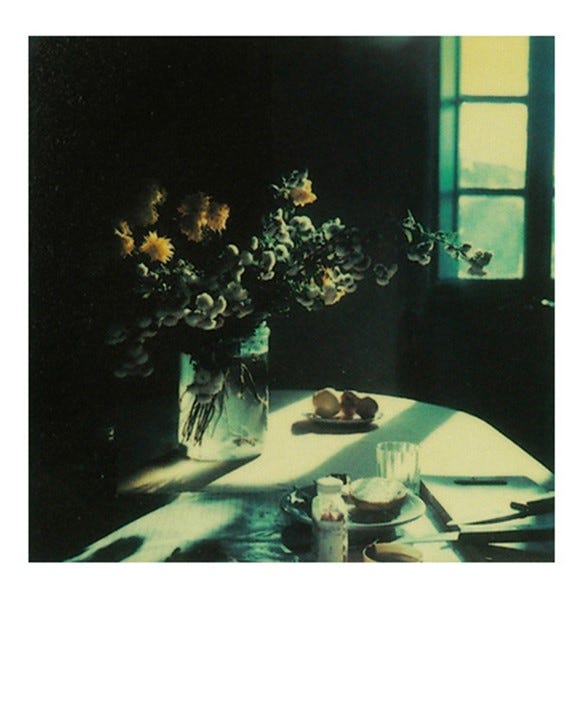


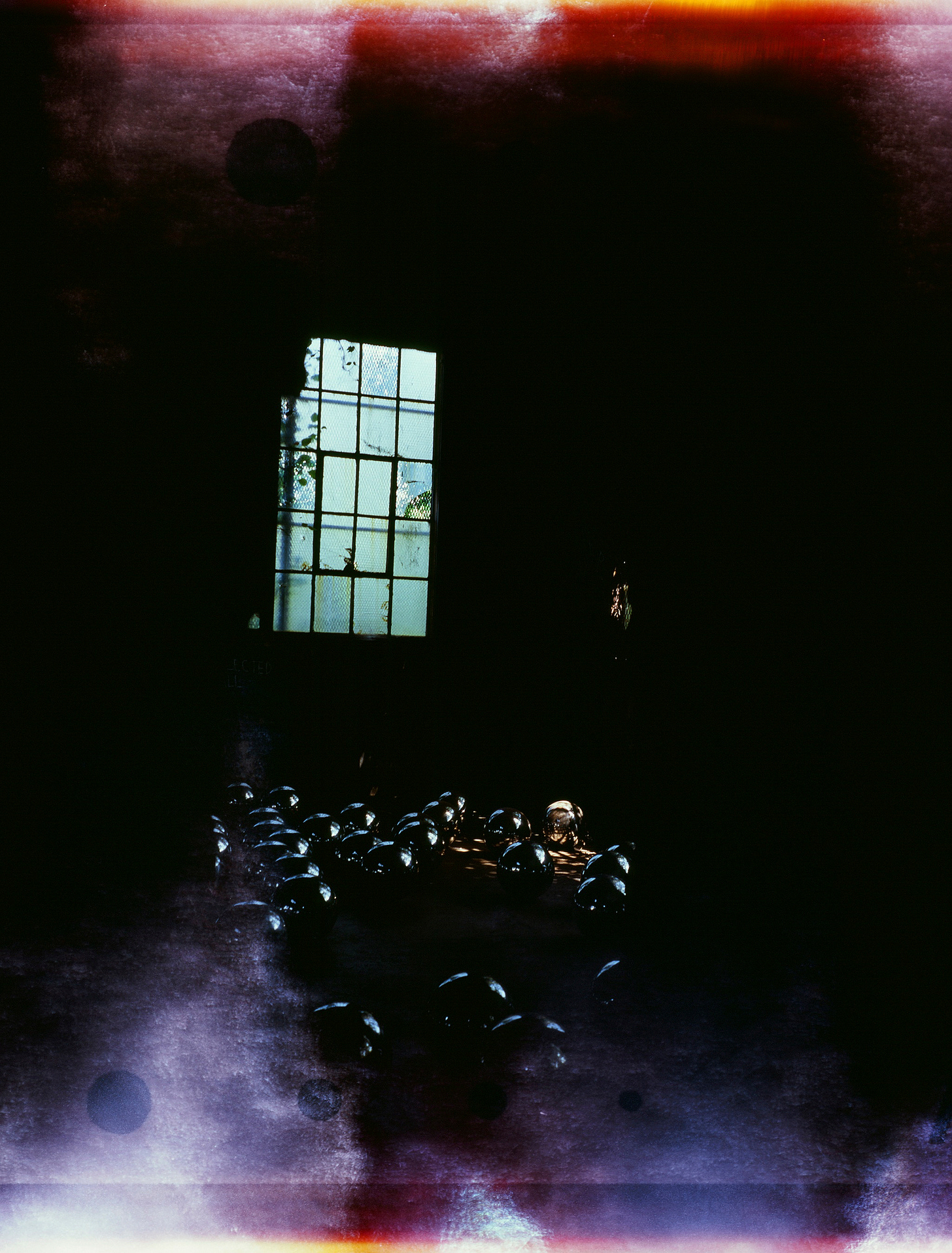
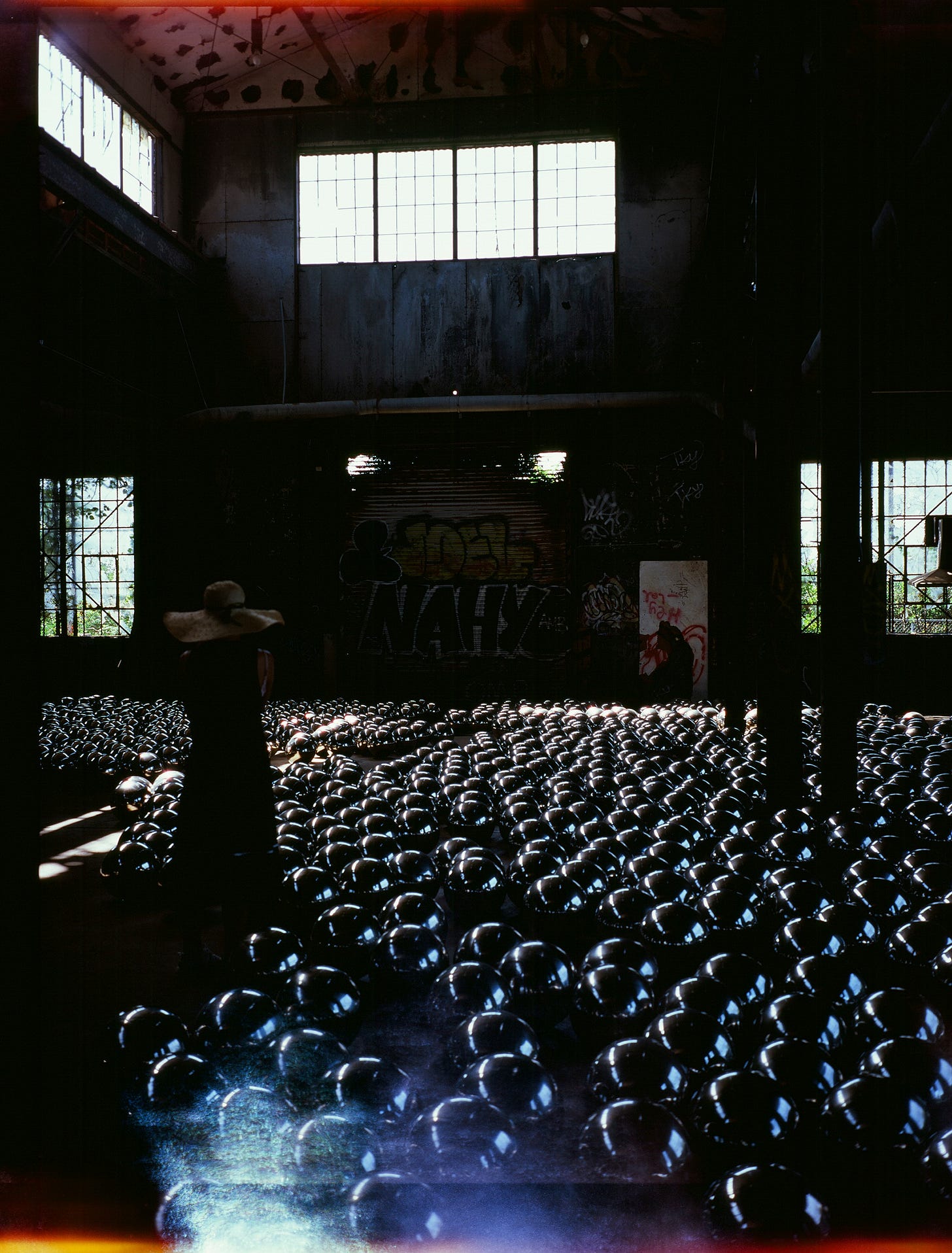
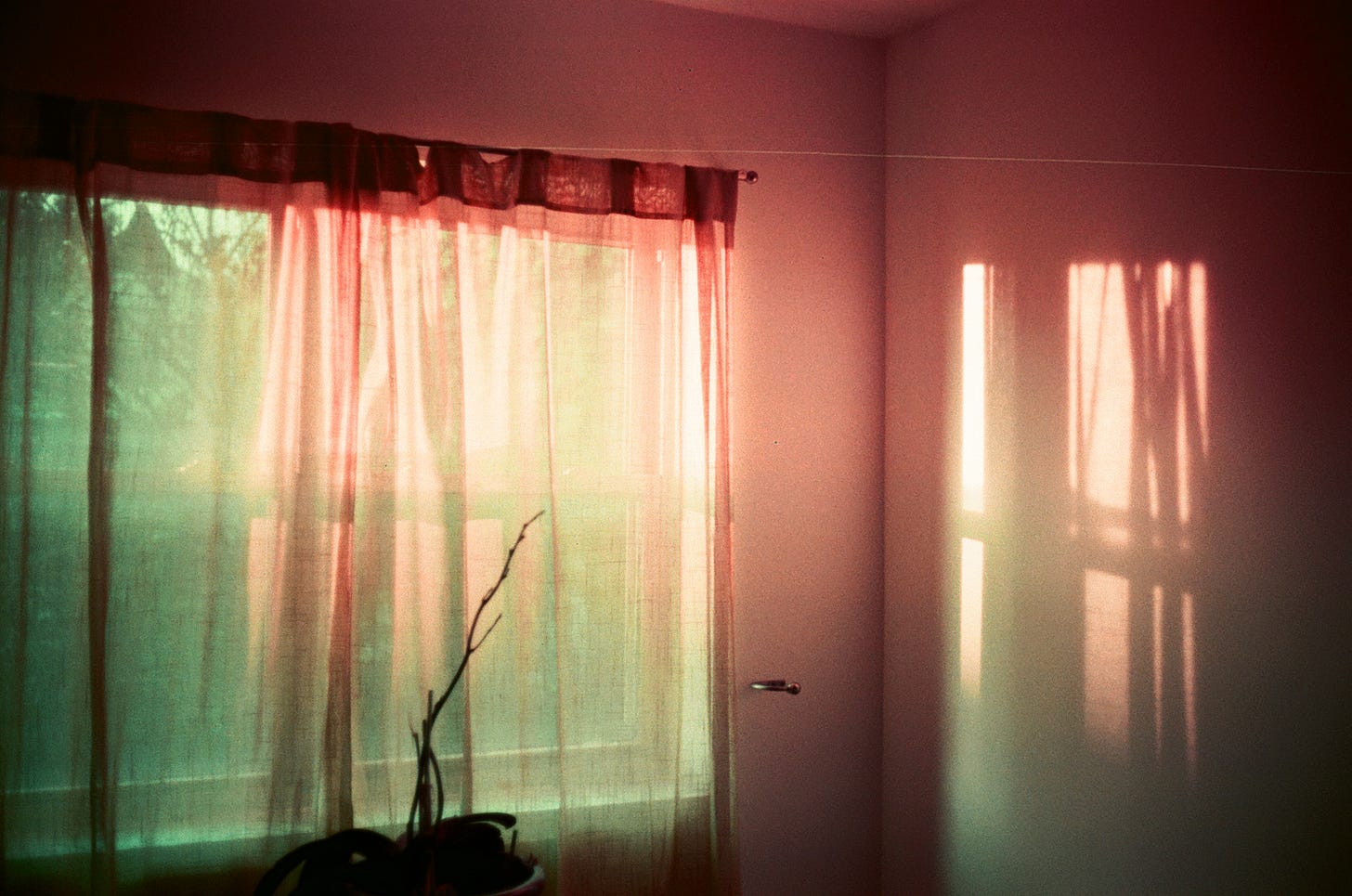

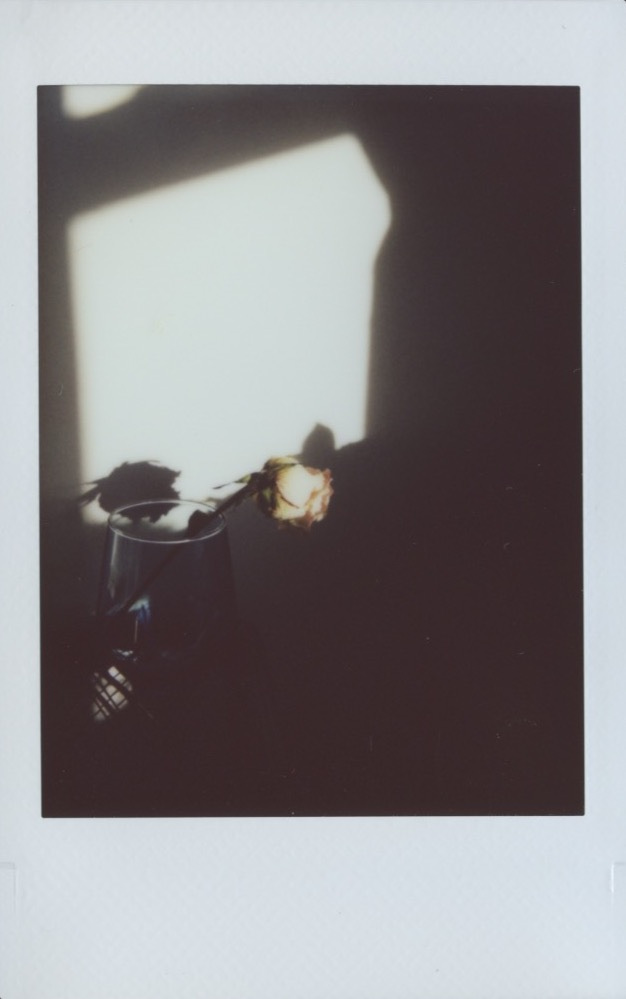
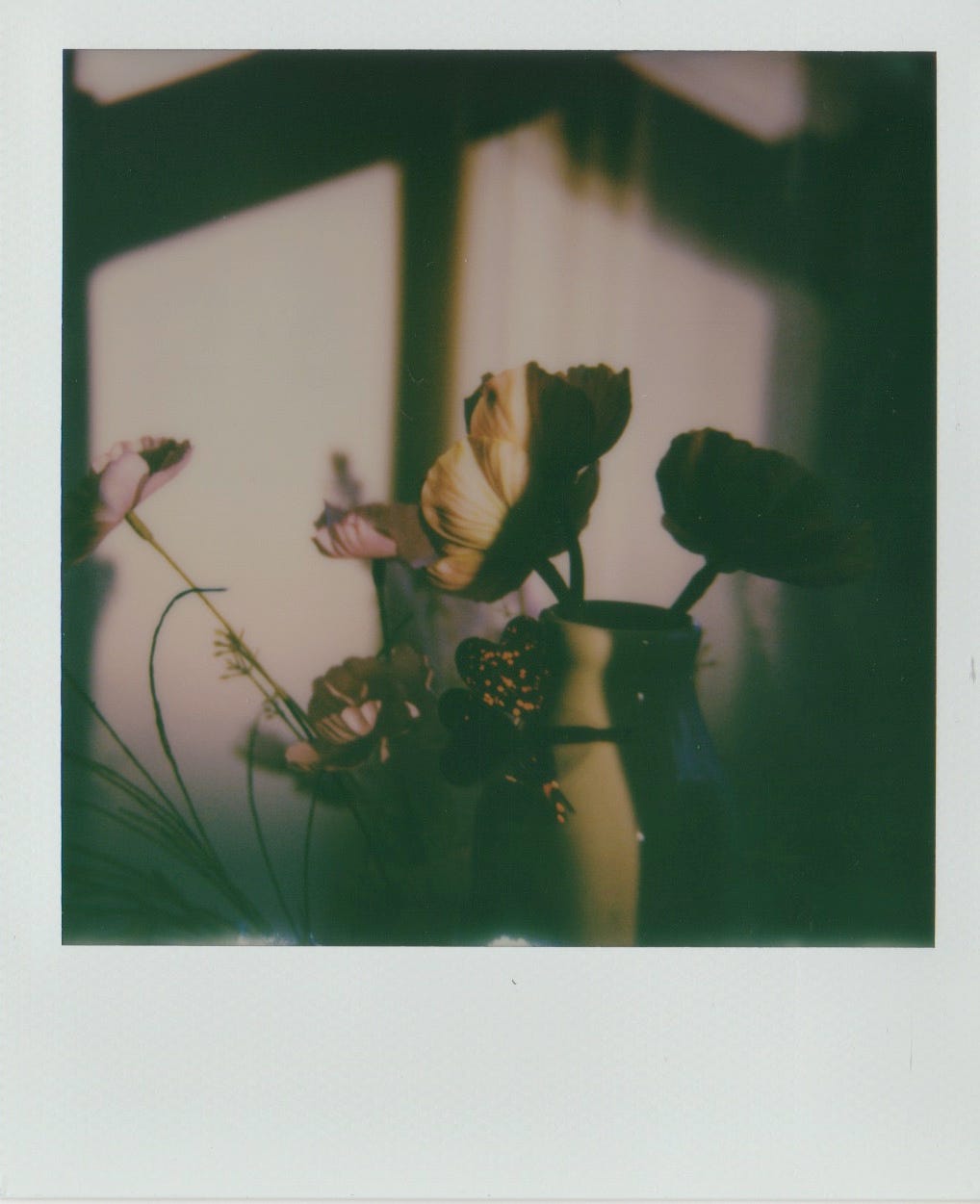
That quality of light captured in that pot of water... it's so moving. I've been trying to make a move from digital to film because I'm just not happy with how light is captured. Your photos have pushed me to consider it more immediately!